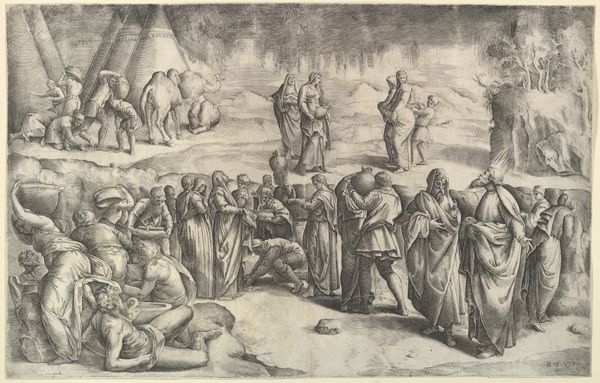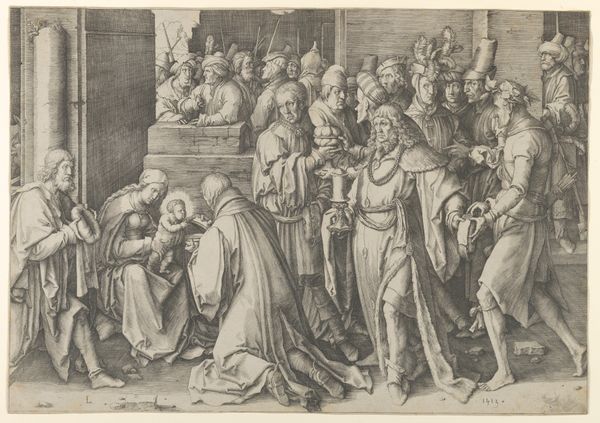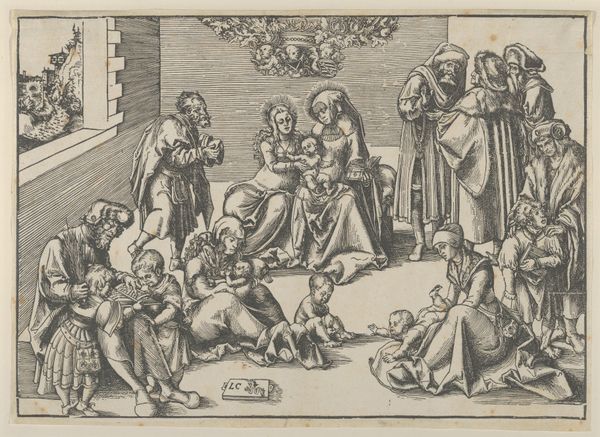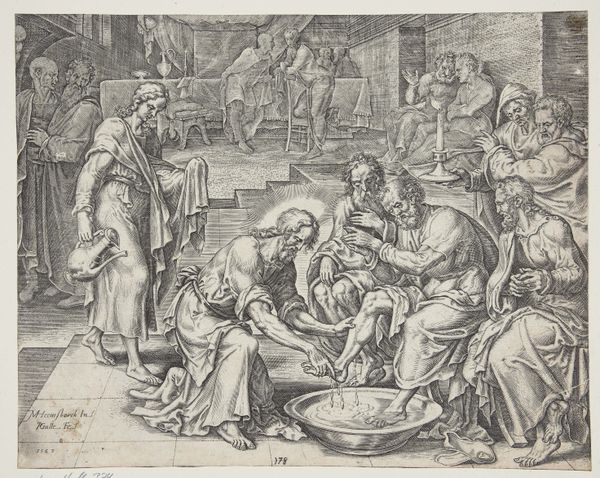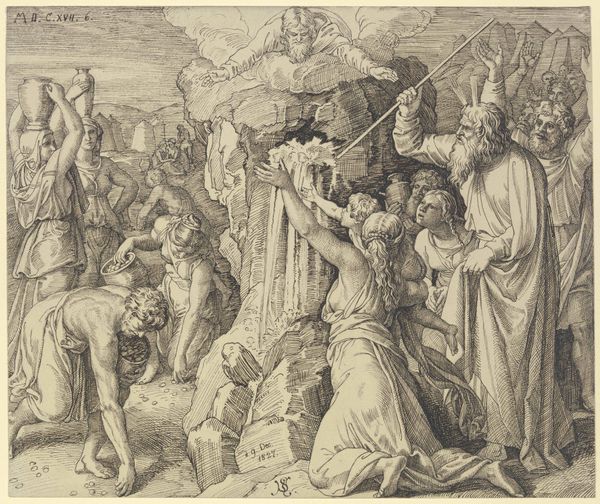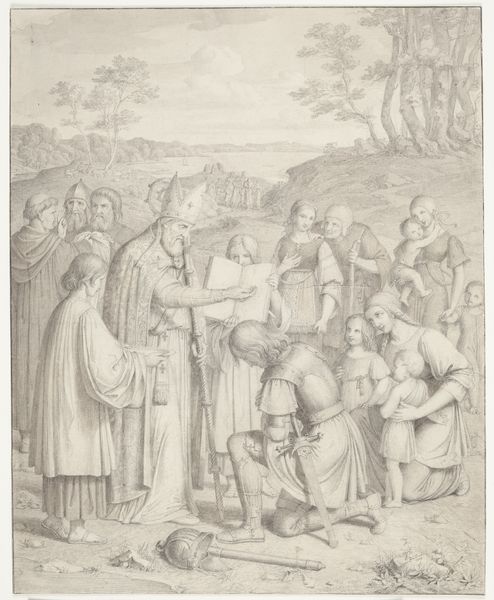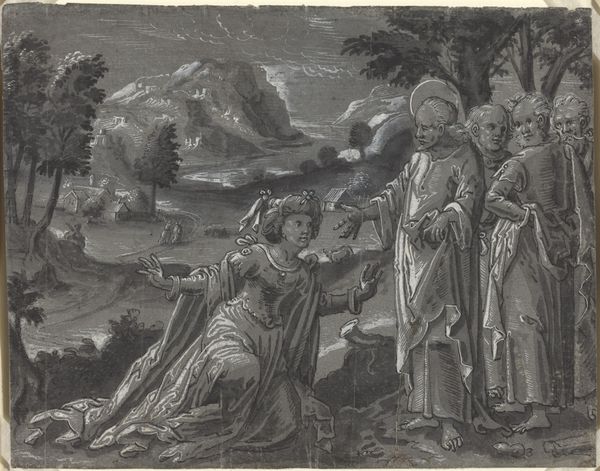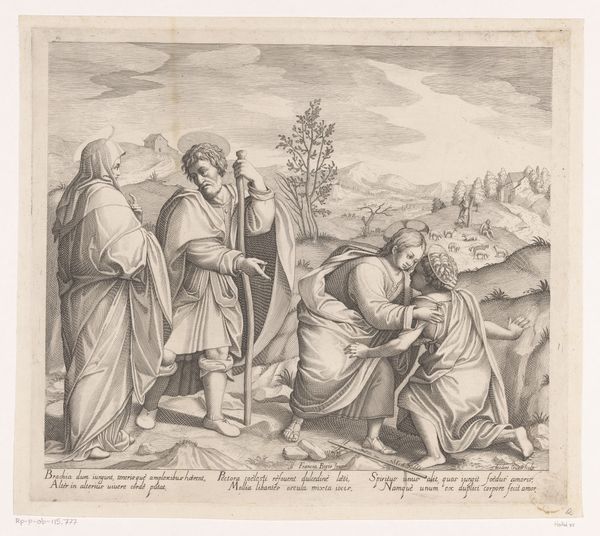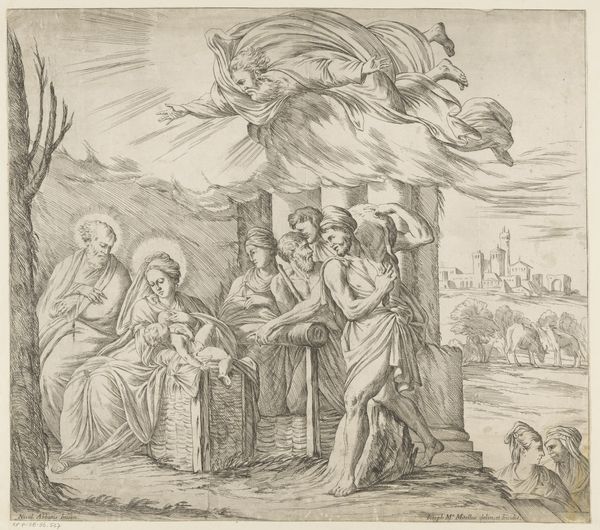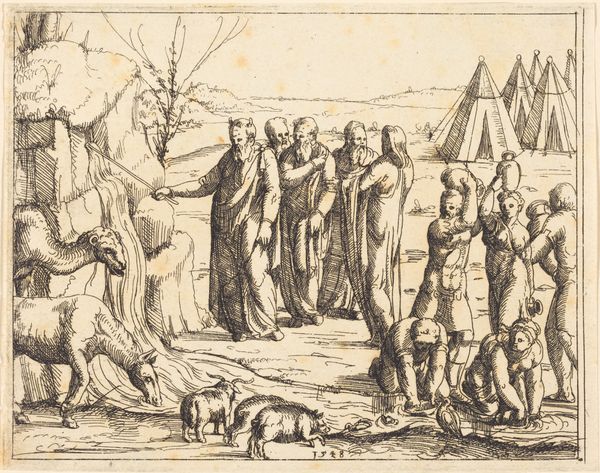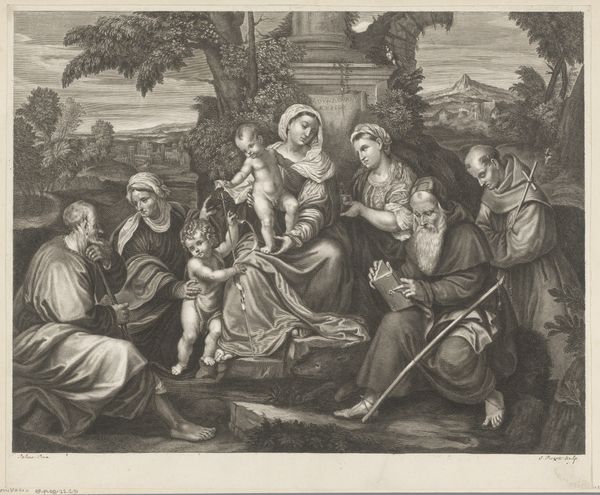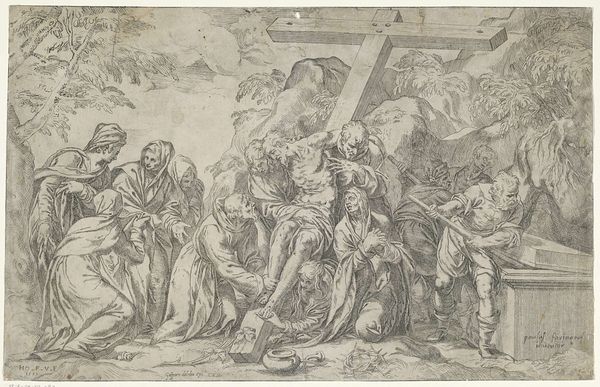
drawing, print, ink
#
drawing
#
narrative-art
#
pen drawing
# print
#
figuration
#
11_renaissance
#
ink
#
classicism
#
history-painting
#
academic-art
#
christ
Dimensions: sheet: 13 7/8 x 17 3/16 in. (35.2 x 43.6 cm)
Copyright: Public Domain
Editor: This drawing, "The Entrance of Christ into Jerusalem," created in 1841 by Gustav Ferdinand König, really captures a sense of classical grandeur, even in its monochrome palette. It almost feels like a stage production. What jumps out to you? Curator: It's compelling how König uses classical visual language to frame a profoundly significant religious narrative. Look at how the figures are arranged, almost like a frieze, referencing ancient Roman processional imagery. What do you notice about Christ's posture? Editor: He seems…melancholy? Not exactly celebratory for such an important arrival. Curator: Precisely. His downcast gaze and hand supporting his head depart significantly from typical triumphal depictions. It’s this nuanced portrayal that suggests a deeper reading. Perhaps König is not simply depicting the entrance, but foreshadowing the Passion, layering the joy of arrival with the knowledge of impending sacrifice. Notice the angel above – are they celebratory or lamenting? Editor: I see what you mean! The angel seems more sorrowful than joyous. It almost feels like König is exploring the duality within religious experience itself. How fascinating! Curator: Exactly. And consider the location, Jerusalem. Over centuries, it remains a symbolic nexus point – of pilgrimage, conflict, and ultimately, redemption. It's a cultural crossroads represented right here. Editor: This has made me see König's drawing in a completely different light. The layers of symbolism create a much richer story. Curator: Indeed. By understanding how visual symbols function across time, we uncover cultural memory itself. König's work isn't just a drawing, it's a tapestry of intertwined histories and emotions.
Comments
No comments
Be the first to comment and join the conversation on the ultimate creative platform.
